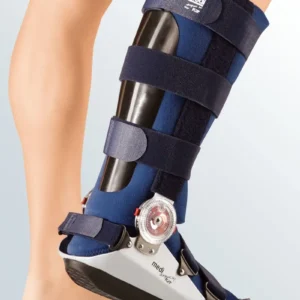Ankle Instability
Ankle instability is characterised by the loss of the joint's ability to maintain adequate support, resulting in excessive movements that can lead to discomfort and falls.
Most common pathologies
on the ankle and leg
Symptoms
Sensation of "Turning" and that the ankle may give way; Recurrent pain especially during physical activity; Oedema (swelling) may occur after excessive exertion.
Risk Factors
History of previous ligament injuries increases predisposition to instability, as is the case with severe sprains; Sports involving sudden changes of direction; Anatomical misalignment; Weakness of the muscles around the ankle.
Protective Factors
Exercises to strengthen the ankle and leg muscles; Balance training to improve motor control and stability; Wearing suitable footwear provides additional support during physical activities.
Treatment
Specific exercises to strengthen, balance and improve stability; Use of orthotics or elastic ankles offer additional support; In severe cases or when other measures are not effective, surgery may be necessary.
Information: All the information contained here is merely a summary for a general understanding of the pathologies, highlighting their definition, symptoms, risk factors, protective measures and treatment options.
Consulting a specialised health professional is essential for an accurate diagnosis and an effective treatment plan.
Support and protection for ankle instability
Discover all the orthotics for ankle instability
-
Seleccione Opções This product has multiple variants. The options may be chosen on the product page
-
Seleccione Opções This product has multiple variants. The options may be chosen on the product page
-
Seleccione Opções This product has multiple variants. The options may be chosen on the product page
-
Seleccione Opções This product has multiple variants. The options may be chosen on the product page
-
Seleccione Opções This product has multiple variants. The options may be chosen on the product page
-
Seleccione Opções This product has multiple variants. The options may be chosen on the product page
-
Seleccione Opções This product has multiple variants. The options may be chosen on the product page
-
Seleccione Opções This product has multiple variants. The options may be chosen on the product page
-
Seleccione Opções This product has multiple variants. The options may be chosen on the product page
-
Seleccione Opções This product has multiple variants. The options may be chosen on the product page
Stabilising elastic foot with silicone pads and "8" elastic band
27,95 €Avaliado 0 out of 5( 0 comentários ) -
Seleccione Opções This product has multiple variants. The options may be chosen on the product page
-
Seleccione Opções This product has multiple variants. The options may be chosen on the product page















